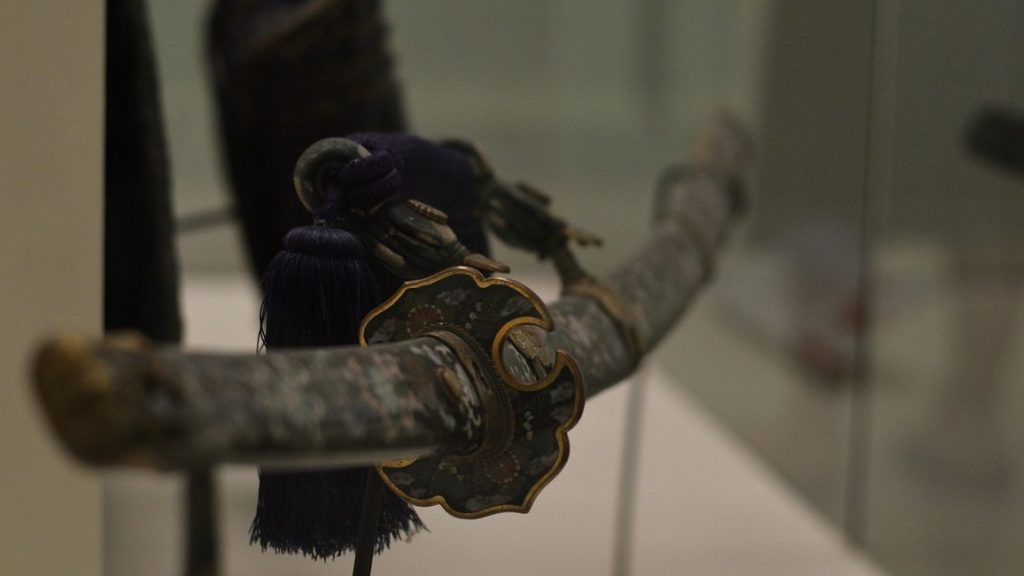Mongol Invasion
There was a time in history, when Mongols, at the time biggest empire, decided to bring Japan under their rule. Kublai Khan wanted this piece of land to become part of the great Mongol Empire, so he sent his diplomats to inform the Japanese ruler about his intentions. The diplomats were always ignored every time they went to deliver a message. That was unacceptable and the invasion was on the way.
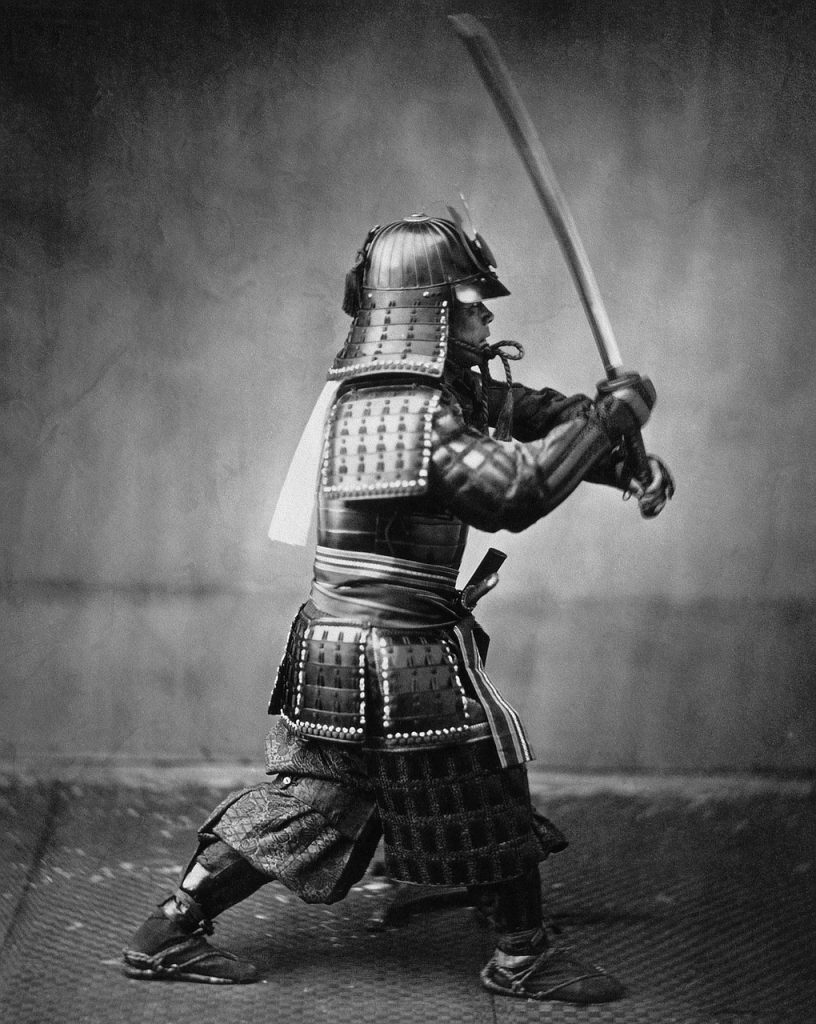
The first of two Mongol invasions on Japan was also a source for the popular video game Ghost of Tsushima, which set events on island Tsushima, which was first attacked when Mongols invade Japan in 1274. On the beach of Komoda, 80 Tsushimas samurai and their subjects confronted a much bigger Mongol fleet. Mongol army consisted of Koreans, Chinese (those two nations were under Mongolian rule) and notorious Mongols.
Samurai were not wielding their katanas, which were not even invented and rather use yumi, a Japanese bow, that was samurai’s primary weapon in this era. Like Mongols, they rode on horses and shot arrows while riding. Invaders were more skillful in this discipline, but they have just arrived at the beach, so this was not an important factor in the battle. In the first lines of the Mongolian army were Koreans and Chinese. The last to come in battle were Mongols, which were considered the most important; after all they were the nation that led the attack. Obviously, the samurai army was defeated and Mongols captured Tsushima.
They did the same with the next island Iki and started attacking beaches of the mainland. Then the unimaginable happened. A huge storm demolished the Mongolian fleet and Mongols were forced to withdraw.
But they did not give up yet. In the year 1281, they came back with an even larger force. The fortune was again on the Japanese side and the same scenario repeated itself. Mongols were successful at capturing Tsushima and Iki but in the end, the Japanese won because of the typhoon, which destroyed the fleet and the surviving Mongolian soldiers were killed or enslaved.
Under such unpredictable winning conditions, people believed that the emperor caused those two storms, which were named Kamikaze, » the divine wind« (and we all know what was called after them, later in history). It is also entirely possible that they won due to some other reason, such as the capabilities of their army and that those two storms, which seem like a miracle, never actually happened.
Who were Samurai?
The honorable Japanese warriors, as we view them today, were members of the higher class and served their daimyos, Japanese feudal lords. The word samurai means »the one who serves,« even though they also had their own land, normally under daimyos. They were used as tax collectors and formed the majority of the Japanese army. As they progressed from tax collectors to aristocrats, they also got their land and servants.
An image that pops in our mind when we heare »samurai,« is often that of an armored warrior with katana and weird-looking helmet (which is later actually accurate). The famous katanas were not used until around the 15th century, although they knew more types of swords earlier. The primary weapon in earlier ages was not a sword, but a bow usually used on a horse. When it was time to fight without their animals, they used naginata (a pole with a special blade on the end), swords and other kinds of Japanese infantry weapons (later on they also used guns). Throughout history, they wore different types of armor. The first of the more recognizable ones was O-Yoroi, the great armor, which was designed to allow the use of the bow while being on horseback. It was made out of more lacquered leather or metal pieces (metal O-Yorois were better in terms of quality) tied with silk code. Later on, samurai could be recognized by their two swords, katana and shorter wakizashi, that only higher classes could wear.
Samurai were masters of armed and unarmed martial arts. They created the art of sword fighting named Kenjutsu, which was usually taught in dojos, places dedicated to learning martial arts. Dojos were runned by experienced swordsman that decided to share their knowledge with others. One of them was Miyamoto Musashi, the greatest Japanese swordsman.
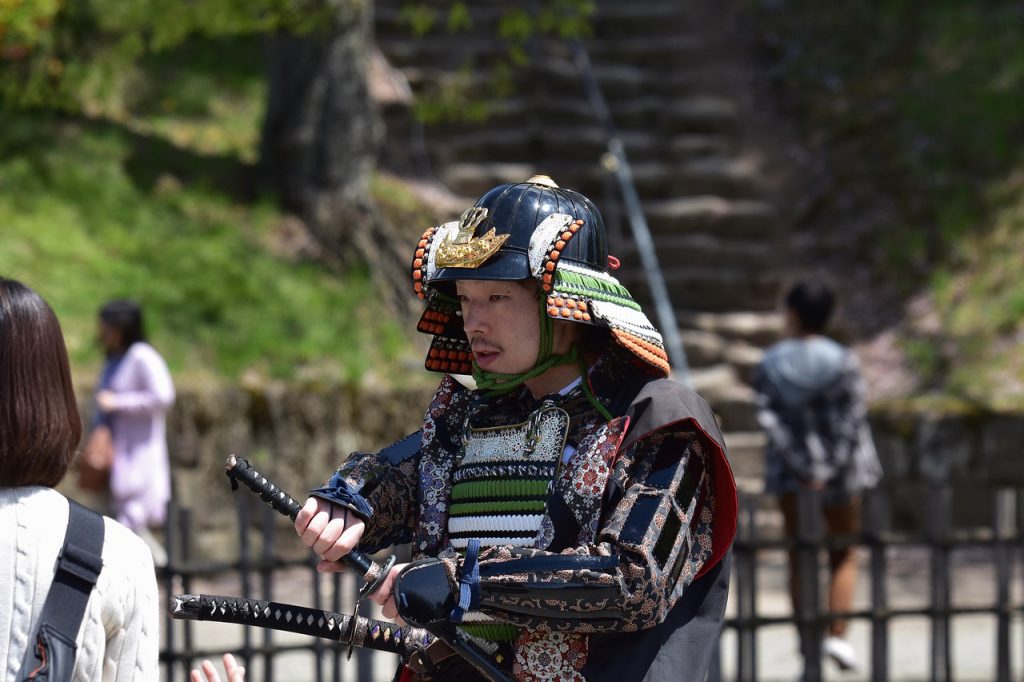
Miyamoto Musashi was born in the year 1584, as a son of a great warrior. His father was trying to teach him how to fight, but he was also a violent man and kicked his 7-years old son out when he again behaved disrespectfully towards him. After that Miyamoto went to his uncle, who was a veteran warrior and now Buddhist monk, that is why the future samurai was raised in the Buddhist temple. He was taught how to read and how to write, but in his free time, Musashi often trained in the hope to become a warrior.
At the age of 13, he had his first fight with a traveling warrior, who challenged local swordsmen to a duel. Miyamoto accepted the challenge and brutally killed his opponent, after attacking him, when the warrior was not prepared (he was talking to Miyamoto’s uncle that wanted to persuade him from this fight).
After some time had passed Miyamoto started traveling and seeking battles. He joined his father’s army and got there some fighting experiences. On his way to create a name for himself, he went in Kyoto and challenged a member of the Yoshioka clan (this family was known for having one of the best sword-fighting schools in Japan) on a duel. Miyamoto won, yet again with one surprise blow. After the fight, he was challenged on another duel; Miyamoto killed his new challenger, the brother of his previous opponent.
When he was leaving the city, the clan decided to ambush and kill him. The act was led by the son of Miyamoto’s latest victim. As they attacked, Miyamoto instantly killed their leader and the others decided to let him go.
After years of drama, travels, learning and fighting, he retreated on an island and opened his own dojo, where he was teaching fighting with two swords. Warriors from all of Japan, traveled there to learn from him. Before he died from sickness, he moved one last time and went into the mountains, where he wrote his famous work, The Book of Five Rings.
Shogunate
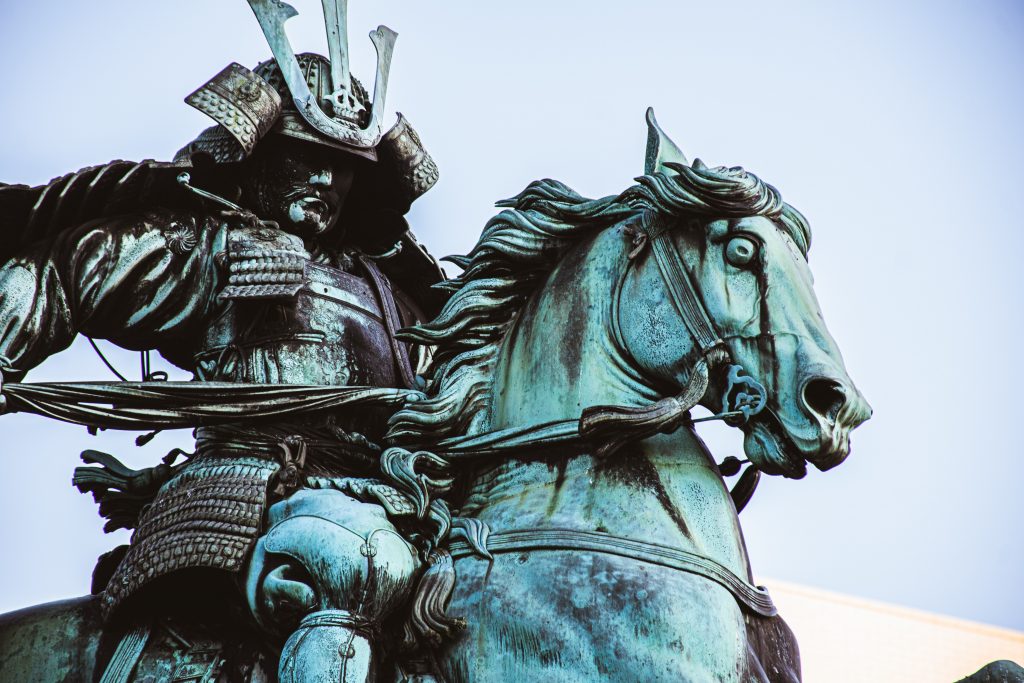
Throughout Japanese history, there were three big shogunates, periods when shoguns ruled Japan. Shogun was samurai, leader of the army, that ruled Japan, although the emperor was still officially the one in charge (but in reality emperor was just a vessel).
First was Kamakura Shogunate created around the start of the 13th century, which ended shortly after Mongol invasions when Japan was in a weak state. The following two were Ashikaga and Tokugawa Shogunate.
The end of the samurai came in Meiji Restoration, which meant the end of Tokugawa shogunate and the start of opening Japan to the West. In year 1868 they started adopting new technologies and political ideas (like getting rid of their feudal system). Some samurai opposed this idea and started a short civil war, that led to the end of samurai.
Bushido – The Imaginary Way?
The idea of Bushido did not come with the first samurai. In 1900 Inazo Nitobe wrote the book Bushido: The Soul of Japan. He wanted to present the Japanese culture to the world. In doing so, he combined some aspects of Japanese culture with Western ones. Nitobe used the Bible’s, Shakespear’s and other quotes that inspired the western culture, to describe the history and behavior of the Japanese. The book was a bestseller on the West but was meet with much colder acceptance in Japan. The Japanese criticized it, but it was too late and now most of the world believes in the tradition of Bushido, the moral code of samurai.
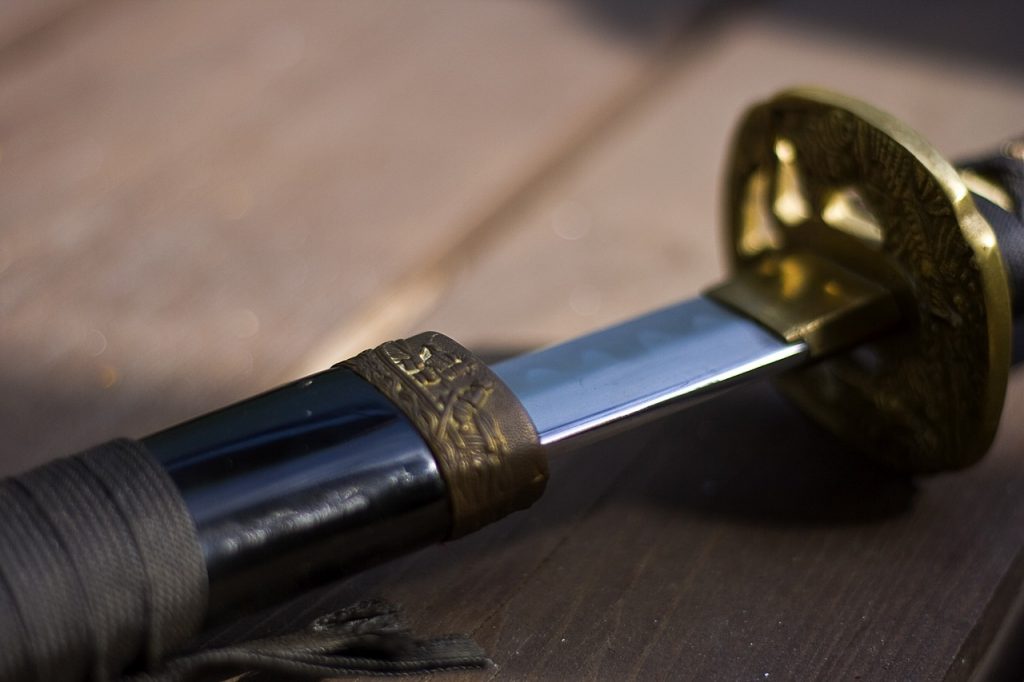
Bushido occurred in Edo Period after Sengoku Jidai (the golden age of samurai) and was first written by Inazo Nitobe. In those times some samurai were not really soldiers anymore; they played other roles but were allowed to keep their weapons. These times were more peaceful and people started to romanticize the past samurai (just like it happens almost always when we think about warriors of the past).
But bushido did not actually exist. There was no universal moral code, that all samurai should bow to. They had honor, but just like in the other parts of the world, they also know betrayal and other dishonorable acts. There was no bushido that commanded them, which haircut they should get, what to wear …
There were some other practices, that we associate with bushido, like seppuku, ritual suicide, also known as harakiri. It really existed and was a way to retain honor. It was done when samurai was defeated (in this case suicide was not always dealt with as custom dictated because it was sometimes made in hurry, so the enemy could not capture them) or when was convicted, after doing something really wrong. The convict stabbed himself in the stomach (later in history, they sometimes did not even stab themselves; they rather did something that resembled the traditional way, like just acted that they were stabbed) and then his assistant killed him with a sword stroke in the back of the neck. If the assistant cut the head off, it was perceived as dishonorable, so the chosen assistants were mostly really skillful with their swords.
CONCLUSION
As with many overromanticized topics, there are many misconceptions about the samurai. Not all were katana-wielding warriors, that dwelled if they should kill themselves on every occasion when they acted dishonorably. The overromanticized image of samurai was also used in World War 2 when the Japanese used it to lift the nation’s spirit. Katanas (that were much cheaper than the real ones) were given to the officers, in hopes that soldiers will be inspired by samurai. Nevertheless, samurai left us memories and stories of their era, which inspired many people to live a more virtuous life.
Sources/Further Research
- https://www.youtube.com/watch?v=QzMTE6fLG5M, Samurai Swords: Evolution and Overview
- https://www.britannica.com/event/Meiji-Restoration, Meiji Restoration
- https://www.youtube.com/watch?v=uDhqUUXCtMU, What a Samurai vs. Mongol Battle Really Looked Like
- https://www.youtube.com/watch?v=11Y_Q1w-d_E&t=461s, Real Ghost of Tsushima – Mongol Invasion of Japan DOCUMENTARY
- https://www.youtube.com/watch?v=O5PJX1hdOPc, The Bushido Myth
- https://www.tofugu.com/japan/bushido/, BUSHIDO: WAY OF TOTAL BULLSHIT
- https://www.youtube.com/watch?v=LbJcXdnPo3c, The Samurai: The Famous Warriors of the Rising Sun – History of Japan – See U in History
- https://www.youtube.com/watch?v=UNLx326JQzE&t=219s, Miyamoto Musashi: The Lone Samurai
- https://www.youtube.com/watch?v=cKyEkgf_Z5A, History of the Samurai: Outsiders to Legends
- SOME MORE INFOS:
- https://www.youtube.com/watch?v=0RZaHgXEhJ4, Yasuke: Story of the African Samurai in Japan
- YouTube channel: The Shogunate (https://www.youtube.com/channel/UCQw2yMTqk4AI6QDN_3qZYpg)
Picture Sources
- Cover image: Image by Miguel Á. Padriñán from Pixabay
- 1. Picture: Image by WikiImages from Pixabay
- 2. Picture: Image by Cock-Robin from Pixabay
- 3. Picture: https://unsplash.com/photos/ghABEDT41Bw?utm_source=unsplash&utm_medium=referral&utm_content=creditShareLink
- 4. Picture: Image by Marc Bach from Pixabay

